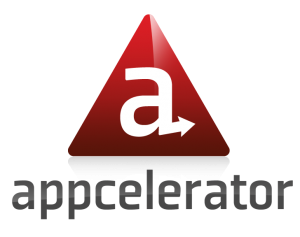 I subscribe to the TechZing podcast and the two hosts, Justin Vincent and Jason Roberts have used Appcelerator for a couple projects of theirs and talk about it in many of the older episodes. I had tried Appcelerator on my old windows box and it was a disaster. Could have been them, could have been me – didn’t care. Then I moved to Mac – and tried it. I still had problems, think I even tweeted about that back in February.
I subscribe to the TechZing podcast and the two hosts, Justin Vincent and Jason Roberts have used Appcelerator for a couple projects of theirs and talk about it in many of the older episodes. I had tried Appcelerator on my old windows box and it was a disaster. Could have been them, could have been me – didn’t care. Then I moved to Mac – and tried it. I still had problems, think I even tweeted about that back in February.
Since I respect the guys from TechZing and with the on going praise, I figured I’d try it again. I googled how to remove it completely from my mac, just to make sure the old broken / mis-configured stuff was gone, downloaded and installed it.
To my amazement, it installed easily, and I was able to quickly open Titanium Studio (essentially eclipse customized for Titanium) and run a new empty app. Granted it wasn’t an exciting app, but it did open in the simulator. After about 40 minutes of dinking around, I was able to get everything in order (thanks Apple) and deployed it to my iPhone. Again, no awesomeness in that app, but still – a huge leap. Titanium has an app called Kitchen Sink – where they add all of their features, and show off the framework. I downloaded that, imported it, and was able to deploy that on my phone as well. This rocked. 10 minutes later, I had it running in the Android simulator. It only took 10 minutes because I had to get the Android SDK stuff in order.
Within an hour of downloading, I had both created and imported apps, built them, tested them on the simulator and deployed them to my iPhone. Amazing.
Appcelerator uses Javascript as a programming language, yea, not just a scripty thing you use on a webpage, as the language. Pretty cool. The code gets compiled using the device SDKs so so the deployed app runs natively on the phone. This gives you access to the device’s features like calendar, GPS, accelerometer, camera, video, photo libraries, file system etc.
I have yet to really start playing around with it, but I’m planning on building an app for a friend, so keep watching this blog for that.
All in all – when I can go from download to deployment on my device in about an hour, that rocks. Titanium Appcelerator gets an A+ from me. Thanks Justin and Jason for influencing me to try it again.

Save yourself the effort! I’m in the process of using Rhodes to rebuild a mobile app that I made the huge mistake of writing in Titanium. There are memory leaks, the production app needs to restart itself after the first time it’s run, it’s a big mess of event handlers to use even the simplest device features, it takes a ton of JavaScript (with more event handlers) to make the interface draw itself correctly at different resolutions and to redraw itself when the orientation is changed, you can’t put the app on the SD card, and the equivalent Rhodes app is significantly smaller. What offends me the most about Titanium is that they keep crowing about their Blackberry support, but the press releases and even the instructions on the Appcelerator site for building Blackberry apps don’t mention that you only get Blackberry support in a beta version with a paid subscription. I only found out when I got halfway through their instructions, found a dialog box that didn’t match their screen shot, then did a Google search on the matter. That trickery cost me and my employer time and money, not to mention making me look foolish for choosing Titanium to begin with.
Really, there has never been a bigger gap between how much I wanted to like a piece of software and how much I actually like it.